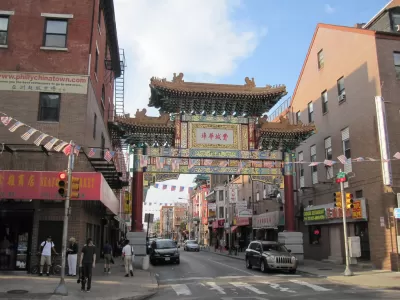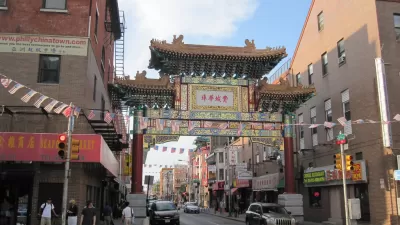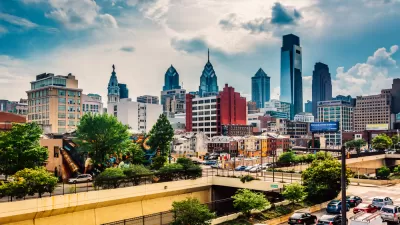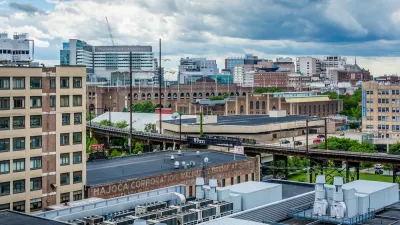With the construction of a new community center and housing, Philadelphia's Chinatown sees a more secure future for the historic neighborhood

While economic forces have decimated some neighborhoods, forcing displacement of existing residents, Philadelphia's Chinatown has so far resisted significant changes. The neighborhood is getting additional stability thanks to the construction of the Eastern Tower, a new apartment complex that includes a community center - the first for the neighborhood.
Jared Brey of Philadelphia Magazine reports that the funding for the Eastern Tower comes from the same program that is helping to build the elevated park soon to take over the Reading Viaduct which runs adjacent to the neighborhood. The Eastern Tower has the potential to blunt some of the potential gentrification pressures created by the new elevated park; anchoring the neighborhood.
The streets and sidewalks are currently the only community spaces in Chinatown. The Eastern Tower will give residents their first recreation center, with space for the Philadelphia Suns, a youth basketball and lion-dancing group. Yeung hopes it gets people to cross the expressway more often, and goes a small way toward mending that open wound.
But the project is more than just housing and community space. It’s not hard to imagine the neighborhood north of the expressway taking on a new name in a few years — Viaductland, maybe, or Rail Park Place. As much as any neighborhood in Philly, Chinatown has had to fight for its right to exist. Refusing to allow the expressway to be its permanent boundary is a credit to its perseverance.
FULL STORY: As Rail Park Rises, Chinatown Tries to Stay Chinatown

Manufactured Crisis: Losing the Nation’s Largest Source of Unsubsidized Affordable Housing
Manufactured housing communities have long been an affordable housing option for millions of people living in the U.S., but that affordability is disappearing rapidly. How did we get here?

Americans May Be Stuck — But Why?
Americans are moving a lot less than they once did, and that is a problem. While Yoni Applebaum, in his highly-publicized article Stuck, gets the reasons badly wrong, it's still important to ask: why are we moving so much less than before?

Using Old Oil and Gas Wells for Green Energy Storage
Penn State researchers have found that repurposing abandoned oil and gas wells for geothermal-assisted compressed-air energy storage can boost efficiency, reduce environmental risks, and support clean energy and job transitions.

Updating LA’s Tree Rules Could Bring More Shade to Underserved Neighborhoods
A new USC study finds that relaxing Los Angeles’ outdated tree planting guidelines could significantly expand urban tree canopy and reduce shade disparities in lower-income neighborhoods, though infrastructure investments are also needed.

California's Canal Solar Projects Aim to Conserve Resources and Expand Clean Energy
California’s Project Nexus has begun generating electricity from solar panels installed over irrigation canals, with researchers and state agencies exploring statewide expansion to conserve water and boost clean energy production.

HHS Staff Cuts Gut Energy Assistance Program
The full staff of a federal program that distributes heating and cooling assistance for low-income families was laid off, jeopardizing the program’s operations.
Urban Design for Planners 1: Software Tools
This six-course series explores essential urban design concepts using open source software and equips planners with the tools they need to participate fully in the urban design process.
Planning for Universal Design
Learn the tools for implementing Universal Design in planning regulations.
Heyer Gruel & Associates PA
City of Moreno Valley
Institute for Housing and Urban Development Studies (IHS)
City of Grandview
Harvard GSD Executive Education
Salt Lake City
NYU Wagner Graduate School of Public Service
City of Cambridge, Maryland





























